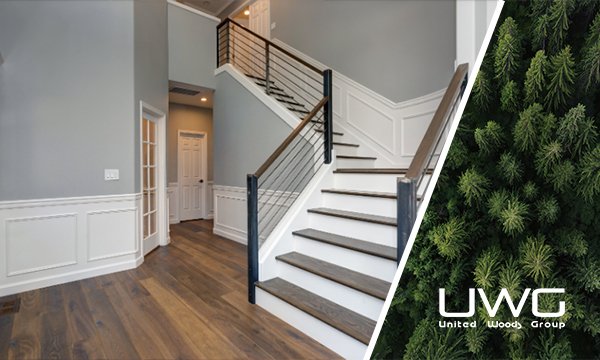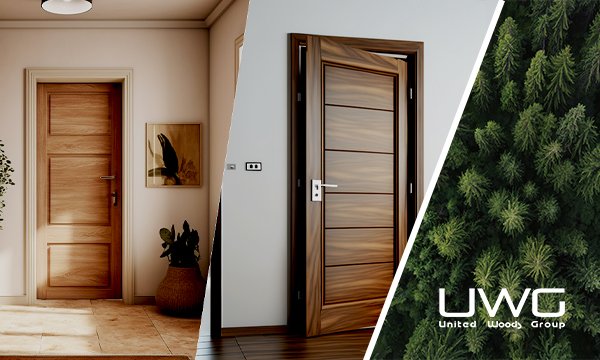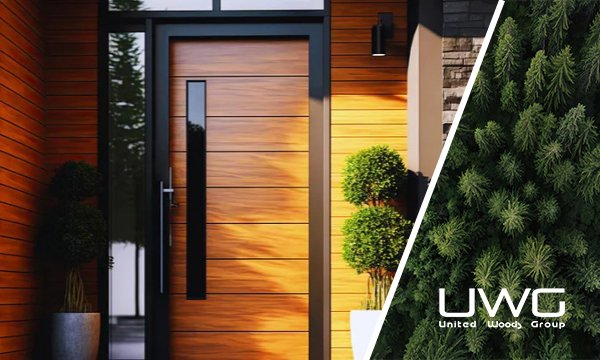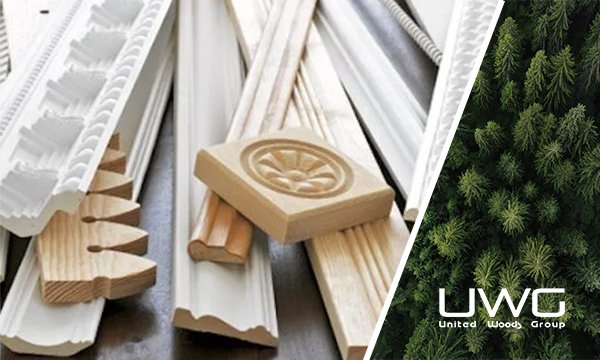As a wholesaler or contractor, understanding the lifespan of interior doors is crucial. It helps you provide accurate information to clients, manage inventory efficiently, and ensure customer satisfaction. Knowing how long an interior door can last under various conditions is key to making informed purchasing and installation decisions. Interior doors play a vital role in both residential and commercial buildings, impacting not only the aesthetics but also the functionality and privacy of spaces. Therefore, having a comprehensive knowledge of their longevity is essential for making the best recommendations to clients.
The lifespan of an interior door varies depending on the material and quality. Pine doors typically last about 20 years, cedar doors can last closer to 30 years, and hardwood doors like mahogany can last 60 years or more. Proper maintenance can significantly extend these lifespans.
Let’s dive deeper into the factors influencing the lifespan of interior doors and how to maximize their durability.
How Long Should an Interior Door Last?
The lifespan of an interior door depends significantly on its construction and material. Hollow-core doors, commonly used in residential projects, generally last between 20 to 30 years. Solid-core doors, which offer better sound insulation and durability, can last anywhere from 30 to over 100 years if properly maintained.
For example:
- Hollow-Core Wood Doors: 20 to 30 years
- Solid-Core Wood Doors: 30 to 100+ years
These estimates highlight the importance of choosing the right type of door for the intended application. Hollow-core doors, which are often lighter and less expensive, may be suitable for areas with less foot traffic, while solid-core doors are preferable for spaces requiring more sound insulation and durability.
In addition to wood doors, other materials like steel and fiberglass also offer varying lifespans. Steel doors, for example, are known for their durability and can last upwards of 100 years. Fiberglass doors, which are resistant to warping and weather conditions, typically have a lifespan of around 70 years.

Factors Affecting the Lifespan of Interior Doors
Several factors can influence how long an interior door lasts:
- Material Quality: Higher-quality materials typically offer greater durability. For instance, hardwoods like mahogany can last much longer than softer woods like pine. The density and hardness of the wood directly affect its resistance to wear and tear. Additionally, doors made from engineered wood or composite materials can offer enhanced durability and stability.
- Usage and Maintenance: Doors in high-traffic areas may wear out faster. Regular maintenance, such as cleaning and timely repairs, can extend a door’s lifespan. For instance, lubricating hinges, tightening screws, and addressing any minor damages promptly can prevent more significant issues down the line. Proper maintenance also includes periodic refinishing or repainting to protect the door’s surface from moisture and environmental factors.
- Environmental Factors: Humidity and temperature fluctuations can cause materials to warp or deteriorate more quickly. Ensuring a stable environment can help preserve the door’s integrity. In areas with high humidity, using materials like fiberglass or properly sealed wood can prevent moisture absorption and related damages. Temperature control within the building also plays a role in maintaining door stability and preventing warping or cracking.
- Installation Quality: Proper installation is crucial for the longevity of interior doors. Poorly installed doors may experience uneven stress, leading to premature wear. Ensuring that doors are hung correctly and aligned with the frame can prevent issues like sticking or uneven gaps. Using high-quality hardware and ensuring proper alignment during installation also contribute to the door’s long-term performance.
- Design and Construction: The design and construction of the door also impact its durability. For example, paneled doors are generally more stable than flush doors because the panels can move slightly with changes in humidity without causing the door to warp. Additionally, doors with a solid core are less likely to suffer from impact damage compared to hollow-core doors.

What is the Life Expectancy of a Door?
Comparing different door types:
- Steel Doors: Often used for exterior purposes, steel doors can last upwards of 100 years due to their robustness. These doors are highly resistant to environmental factors and physical damage, making them ideal for areas requiring enhanced security and durability. However, steel doors used internally can offer similar longevity benefits, especially in commercial or industrial settings.
- Fiberglass Doors: These doors can last around 70 years, offering a good balance between durability and maintenance. Fiberglass doors are resistant to warping, cracking, and other common issues associated with wood doors. They are also energy-efficient and provide excellent insulation properties, making them suitable for both residential and commercial use.
- Wood Doors: Wood doors have varied lifespans based on the type of wood. Pine doors last about 20 years, cedar doors about 30 years, and mahogany doors can exceed 60 years. The natural beauty and warmth of wood make it a popular choice, but it requires proper maintenance to achieve its full lifespan. Treatments like sealing, painting, or staining can protect wood doors from moisture and environmental damage.
Understanding these differences helps in selecting the right door for specific needs. For instance, in a high-traffic commercial setting, steel or fiberglass doors might be more appropriate, while residential applications might favor the aesthetic appeal of wood doors.

Signs That an Interior Door Needs Replacement
Over time, interior doors can show signs of aging and wear. Common indicators include:
- Visible Damage: Cracks, dents, or warping are clear signs that a door may need replacement. Physical damage can compromise the door’s functionality and aesthetic appeal, making replacement a necessary consideration.
- Functional Issues: Difficulty in opening or closing the door smoothly can indicate that the door has warped or the frame has shifted. This can result from repeated stress, poor installation, or changes in the building’s structure. Addressing these issues promptly can prevent further damage.
- Aesthetic Wear: Fading, peeling paint, or other cosmetic issues can diminish the door’s appearance. While some aesthetic issues can be remedied with refinishing or repainting, significant wear may warrant replacement to maintain the desired look and feel of the space.
- Drafts or Noise: If a door no longer seals properly, it may let in drafts or fail to block noise effectively. This can affect the comfort and energy efficiency of the building. Replacing the door with a better-fitting or more insulating option can resolve these issues.
- Hardware Problems: Issues with hinges, handles, or locks can also indicate that a door is nearing the end of its useful life. While some hardware problems can be repaired, persistent issues may suggest that the door itself needs replacement.
Recognizing these signs early can help in planning timely replacements, preventing further damage, and ensuring that the doors continue to meet functional and aesthetic needs.

Extending the Lifespan of Interior Doors
To maximize the lifespan of interior doors:
- Regular Maintenance: Regularly clean and inspect doors for any signs of damage. Addressing minor issues promptly can prevent more significant problems and prolong the door’s life. Cleaning the door surface and hardware helps maintain its appearance and functionality.
- Environmental Control: Maintain consistent indoor humidity and temperature levels to prevent warping and other damage. Using dehumidifiers or humidifiers as needed can help create a stable environment for the doors. Additionally, installing weather stripping and seals can protect against drafts and moisture intrusion.
- Quality Hardware: Use high-quality hinges, handles, and other hardware to prevent premature wear. Investing in durable hardware ensures that doors operate smoothly and reduces the need for frequent repairs or replacements. Regularly lubricating hinges and checking for loose screws can also maintain the door’s performance.
- Proper Installation: Ensure that doors are installed correctly and aligned with the frame. Poor installation can lead to uneven stress and premature wear. Professional installation ensures that doors fit properly and operate efficiently.
- Protective Finishes: Applying protective finishes like paint, varnish, or sealant can protect doors from moisture, UV rays, and other environmental factors. These finishes not only enhance the door’s appearance but also extend its lifespan by preventing damage.
- Use of Door Stops and Protectors: Installing door stops and protectors can prevent damage from impacts, especially in high-traffic areas. These simple additions can save doors from dents and scratches, maintaining their appearance and functionality.
These practices can significantly prolong the life of interior doors, ensuring they remain functional and aesthetically pleasing for years. By following these maintenance and care tips, wholesalers and contractors can provide valuable advice to their clients and enhance the overall value of their services.

Cost Considerations for Replacing Interior Doors
Replacing interior doors involves various costs:
- Material Costs: Higher-quality doors and materials come at a premium. Solid-core or hardwood doors, for example, are more expensive than hollow-core or softwood doors. However, their increased durability and lifespan often justify the higher initial investment.
- Labor Costs: Professional installation ensures proper fitting and longevity, but it adds to the overall cost. Skilled labor can prevent installation issues that might lead to premature wear or functional problems.
- Long-Term Savings: Investing in durable doors can save money in the long run by reducing the frequency of replacements. High-quality doors with proper maintenance can last significantly longer, reducing the need for frequent replacements and associated costs.
- Additional Features: Features like insulation, soundproofing, and enhanced security can increase the cost of doors but provide added benefits. These features can improve the comfort, safety, and energy efficiency of the building, offering long-term value.
- Aesthetic Value: The visual appeal of high-quality doors can enhance the overall look and feel of a space, potentially increasing property value. Investing in aesthetically pleasing doors can also improve customer satisfaction and make a positive impression on visitors or clients.
Balancing these costs against the benefits of durability and longevity is crucial for making the best financial decisions. Wholesalers and contractors should consider the specific needs and budget constraints of their clients when recommending interior doors.

Summary
In summary, the lifespan of an interior door is influenced by its material, usage, maintenance, and environmental factors. By choosing the right materials, maintaining them well, and recognizing the signs of wear, you can ensure that interior doors last as long as possible. For wholesalers and contractors, this knowledge is essential for advising clients and managing resources effectively. Investing in high-quality doors and proper maintenance practices can lead to long-term savings and enhanced satisfaction for both contractors and end-users.
If you have any questions or need further information, feel free to contact us directly!







